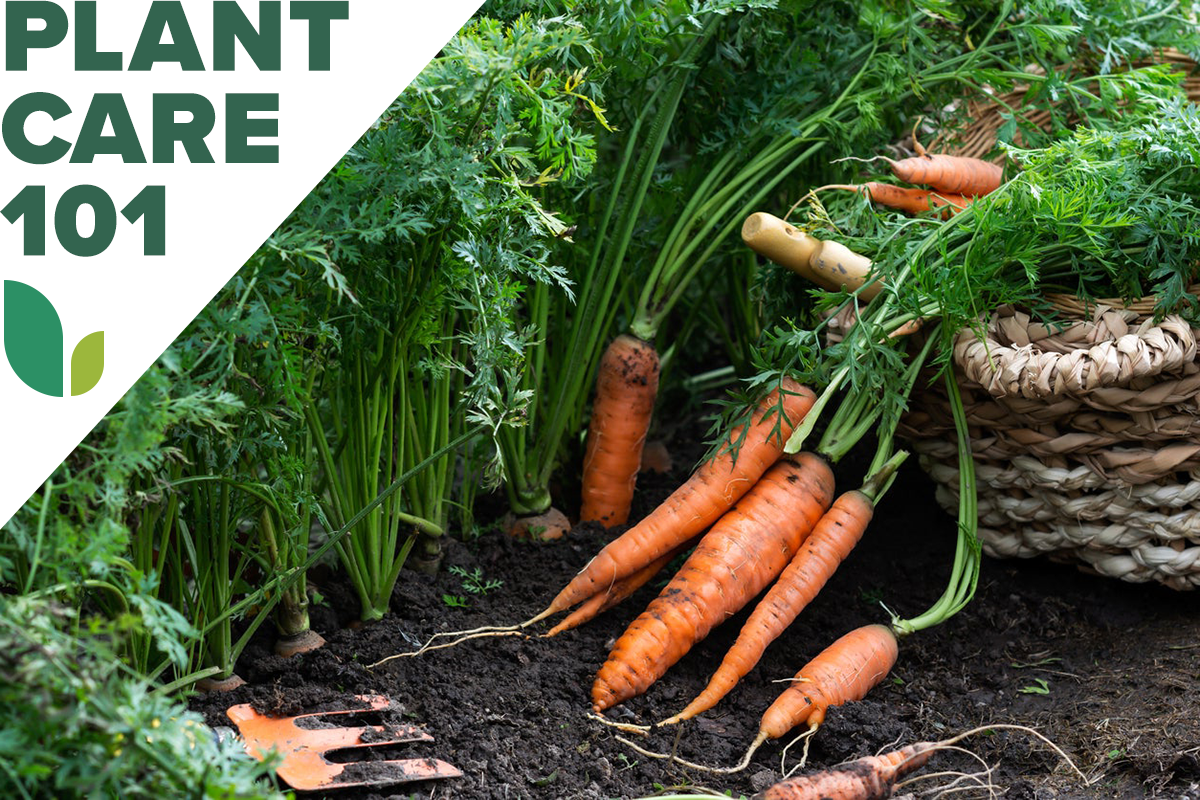

We may earn revenue from the products available on this page and participate in affiliate programs. Learn More ›
Bugs Bunny was onto something, always munching on carrots. These root vegetables aren’t just tasty—they’re good for you and filled with antioxidants, fiber, vitamins, and minerals. Carrots promote digestive health, support your immune system, and can even reduce the risk of some types of cancer. Most carrot lovers buy their supply at the supermarket, but gardeners can grow carrots right at home.
Growing your own carrots is rewarding, as it’s considered one of the more difficult veggies to grow. However, as long as you have loose, rich soil and warm temperatures—and can wait several weeks before harvesting—you can learn how to grow carrots and reap the tasty benefits.
RELATED: 12 Perennial Vegetables to Plant for Years of Fresh Produce
Growing Carrots at a Glance
Common Name: Carrot
Scientific Name: Daucus carota var. sativus
Hardiness Zone: USDA Zones 3 to 10
Soil: Loose, well-draining, rich soil; pH 6.0 to 6.8
Light: Full sun to partial shade
Water: 1 inch of water weekly
Food: Vegetable fertilizer 2 weeks after tops emerge; don’t over-fertilize
Propagation: By seed or carrot top
Safety: Non-toxic, but prolonged overconsumption can discolor skin
Carrot Characteristics
The carrot plant is a biennial root vegetable that is usually harvested its first year. Its delicate fern-like foliage produces five-petaled flowers, but it’s the root—from 1 inch to 12 inches long—that earns the Daucus carota its name. Usually orange but capable of a range of colors, it’s a healthy and crunchy food choice.
Native to Iran and Afghanistan, the carrot is a cousin to the turnip and parsnip. In the 10th century, they were domesticated in Asia, where they became a diet staple. The familiar orange variety dates back to 17th century Dutch cultivation.
Best sown in spring, carrot seeds can take 10 to 21 days to germinate. Not one of the fastest-growing vegetables, carrots aren’t ready to harvest for 50 to 90 days, depending on the variety being grown. For even sweeter flesh, leave carrots in the ground in fall; they can survive frost, but dig them up before the ground freezes in winter.
Recommended Carrot Varieties
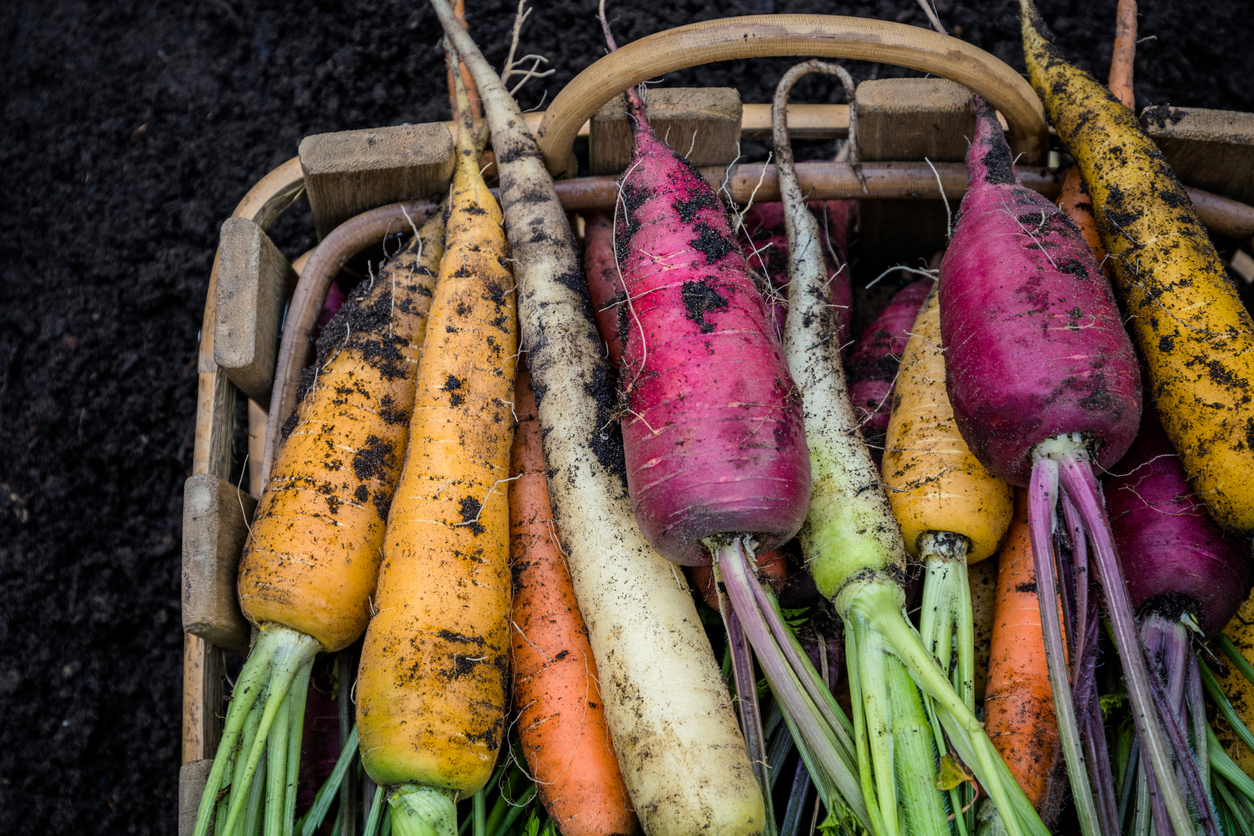
There are many varieties of carrots, categorized into several types. Here are a few popular ones:
- Yellowstone: A Danvers variety known for its 6- to 8-inch long yellow roots, Yellowstone carrots are ready to harvest early and produce vigorous tops that compete with weeds.
- Napoli: One of the fastest-growing varieties, Napoli carrots mature sooner than others, producing 7- to 8-inch cylindrical roots with near-red flesh typical of the Nantes type that is both sweet and crunchy.
- Japanese Imperial Long: As its name implies, this Imperator variety from Japan is long, reaching up to 2 feet in length. This commercially grown carrot has fast-growing foliage and a higher sugar content than other types, and it’s often found in grocery stores.
- Hercules: This hybrid Chantenay variety does well in rocky or poor soil or containers, growing to 6 to 7 inches long and producing vigorous tops. Although they’re very sweet, Hercules carrots become woody if they aren’t harvested at the recommended time. They store well, however.
- Paris Market: Featuring a red-orange skin, these sweet little “ball” or “mini” carrots are only 1 to 2 inches in diameter, making them an excellent choice for container growing or for gardens with rocky soil.
RELATED: How to Grow Peas
Planting Carrots
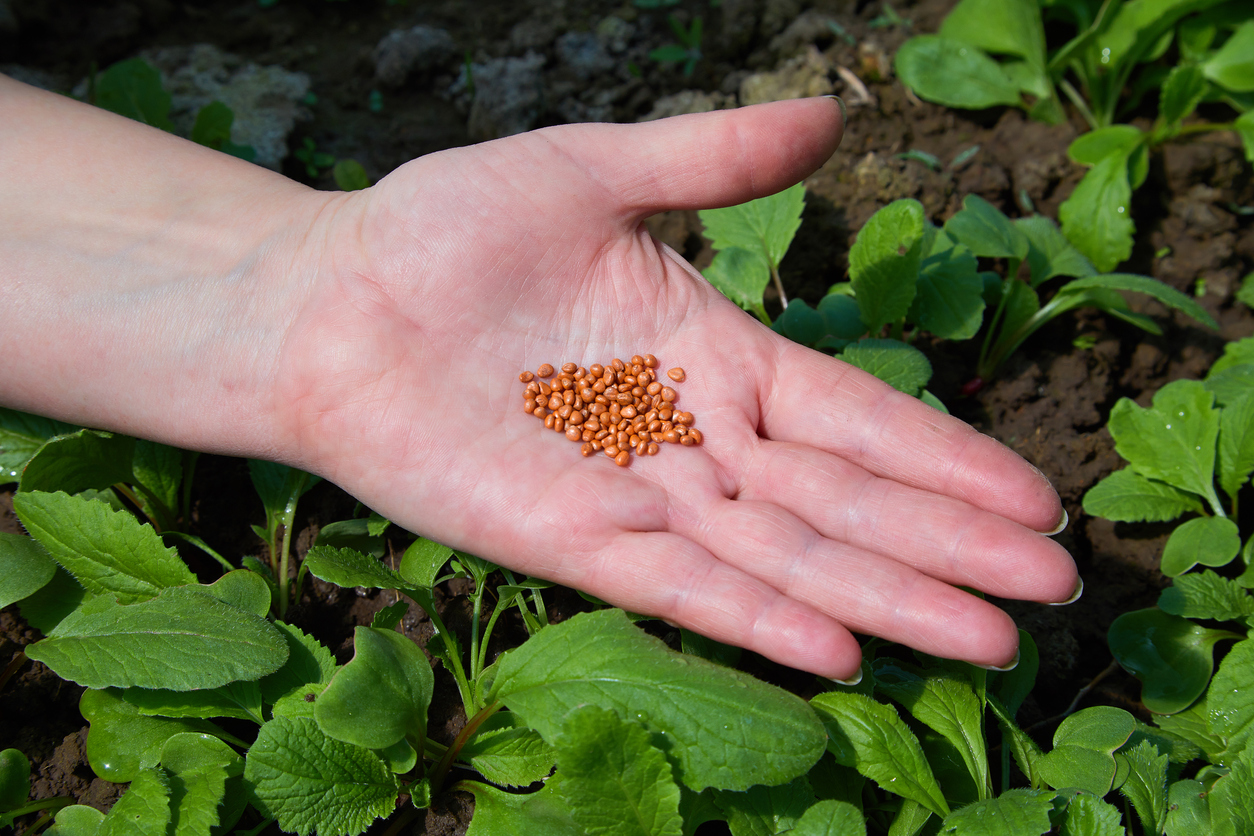
Growing carrots isn’t too difficult, even for gardening beginners, as long as your soil is loose to allow the roots to grow. Carrots get their finicky reputation not only from soil requirements, but from the challenge of planting carrot seeds with proper spacing.
When is the best time to plant carrots?
Knowing when to plant carrots can make the difference between a successful crop and a failure. Planting carrots is best done as soon as the soil can be worked in cool weather, even if it’s only a couple of weeks before the last frost of spring. Despite their cold hardiness, nighttime temperatures around 55 degrees Fahrenheit are best for sowing carrot seeds. They don’t tolerate daytime temperatures over 75 degrees well, so spring or fall are the best planting times.
Where can carrots grow?
Carrots can be grown in USDA Zones 3 through 10 as long as the soil conditions are suitable. Soil should be loose and rich, although some varieties can tolerate rocky or poor soil. Compost, sand, and wood ash can add nutrients, drainage, and soluble potassium, respectively.
Carrots like full sun but can tolerate partial shade, and they fare well in the ground, in raised beds, and in containers. Good companion plants to grow nearby include leeks and onions (whose smell will deter flies), tomatoes, beans, lettuce, radishes, and herbs like rosemary, sage, and chives.
How do you plant carrots?
Most carrots are planted from seed. But because the seeds are so tiny, it is easy to oversow carrots.
- Prepare the soil by tilling or hoeing 8 to 12 inches deep and adding compost.
- Sow seeds thinly, about 2 inches apart and ¼ inch deep. Mix them with sand to help track where they’ve been planted and keep them spaced out.
- Cover the seeds with soil.
- Keep the ground moist until the seeds sprout.
- When carrots are about 4 inches tall, they need to be thinned to keep the growing roots about 3 inches apart.
Can you grow carrots in containers?
With little additional effort, you can also learn how to grow carrots in containers! Shorter carrot varieties adapt well to containers. To let them fully develop, select a container at least 12 inches deep and large enough to leave space between seedlings and the container’s edge. Ensure the container has sufficient drainage, place it in a sunny spot, and water well.
RELATED: How to Grow Your Own Food
Watering Carrots
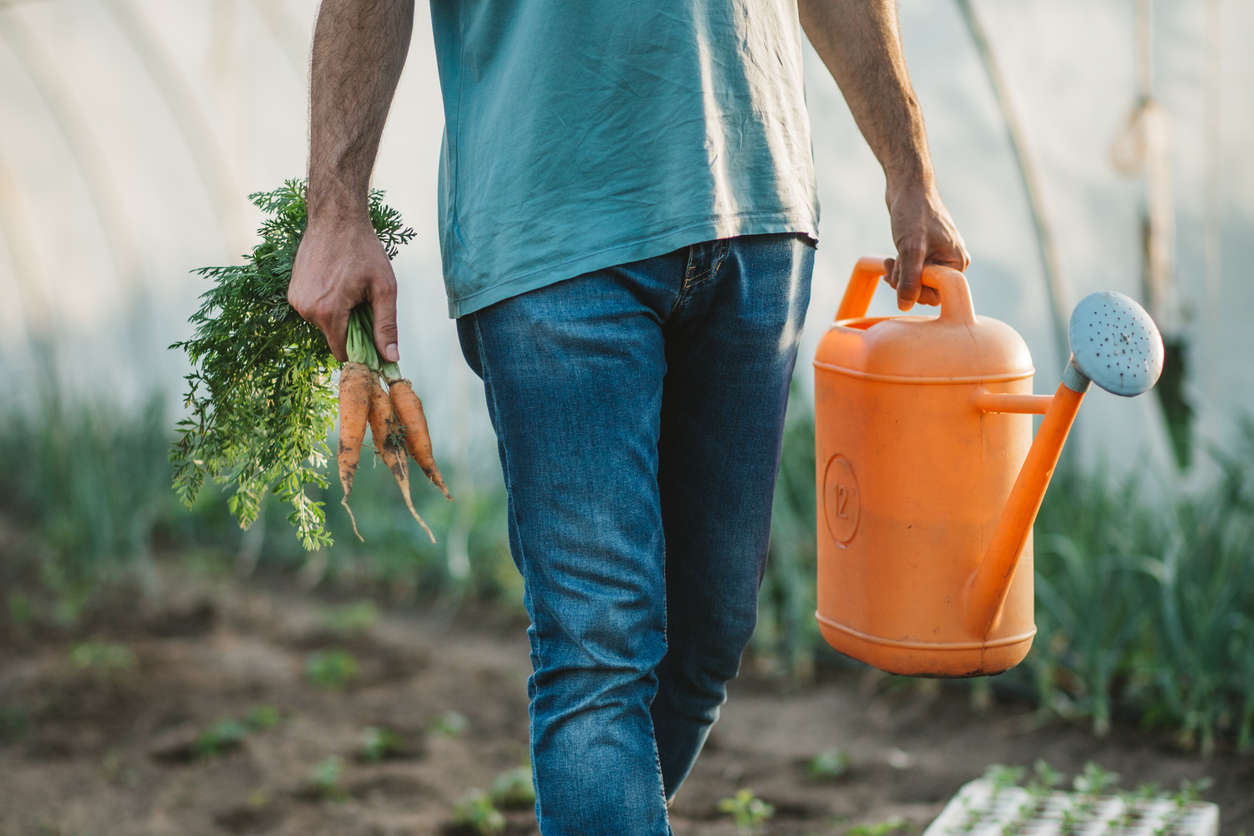
Carrots need about 1 inch of water a week, or as much as needed to keep the soil moist to a depth of about 3 inches. Deep watering encourages root development; if the tip of the root doesn’t get enough water, the carrot will be stunted. As with most plants, water early in the morning.
Consistent watering is important during all carrot growth stages. Once the tops emerge, you can mulch around carrot seedlings to retain soil moisture.
Fertilizing Carrots
If your soil doesn’t have a lot of nutrients, you’ll need to fertilize your carrots—but not until about 2 weeks after the tops emerge and reach about 3 inches in height. Use any quality vegetable fertilizer, particularly one low in nitrogen to minimize foliage growth. A 0-10-10 or a 5-15-15 fertilizer is best. Phosphate and potassium encourage root growth, which is desirable in carrots.
Many water-soluble fertilizers contain too much nitrogen. Use a granular fertilizer and water it in well. With carrots, it’s best to apply fertilizer at half the rate suggested by the packaging instructions, as too much fertilizer produces forked, hairy roots and less flavorful carrots. If you’re growing carrots organically, mix compost into the soil and add fish emulsion for nutrients.
Propagating Carrots

Most of the time, carrots grow from seeds. Carrots planted in the ground will not produce other carrots from their roots, but will grow a carrot plant, which should produce seeds that can be harvested to plant later.
It’s also easy to learn how to grow carrots from tops, so save your table scraps. Just remember that these are carrot plants, not carrots. A carrot is a taproot that cannot regrow itself. You can sprout carrot plants by placing carrot tops on a marble tray, suspended in a glass of water, or on damp newspaper.
Safety Considerations
Carrots are nontoxic to dogs, cats, and other animals. In fact, many dogs like carrots, so they can be given as a low-calorie, low-fat treat. While less likely to enjoy them, cats may also like carrots, especially when cooked. Other animals that like carrots include horses, alpacas, squirrels, deer, groundhogs, and rabbits.
Although they’re edible for people, too, if humans eat too many carrots over an extended period of time, their skin can become discolored, a condition known as carotenemia. It typically occurs around the nasal area, palms, soles, and knees.
Potential Pests and Diseases
Because many animals like carrots (deer, groundhogs, opossums, and rabbits), gardeners may want to fence off their carrots—or grow a few extra to share! However, there’s no use sharing with bugs. This crop’s biggest pest is the carrot rust fly, which lays eggs in the soil near carrot tops, giving hatchlings easy access to tunnel their way through carrots as they eat. Carrot weevils work similarly, while nematodes are microscopic worms that can cause deformed roots.
Carrots are also susceptible to bacterial diseases such as leaf spot, leaf blight, carrot yellows, and bacterial soft rot. If these develop, the plants should be pulled and discarded, and carrots should not be planted in the same spot the following year since microorganisms can live in soil long term.
RELATED: 12 Climbing Vegetables That Are Perfect for Compact Gardens
Harvesting Carrots
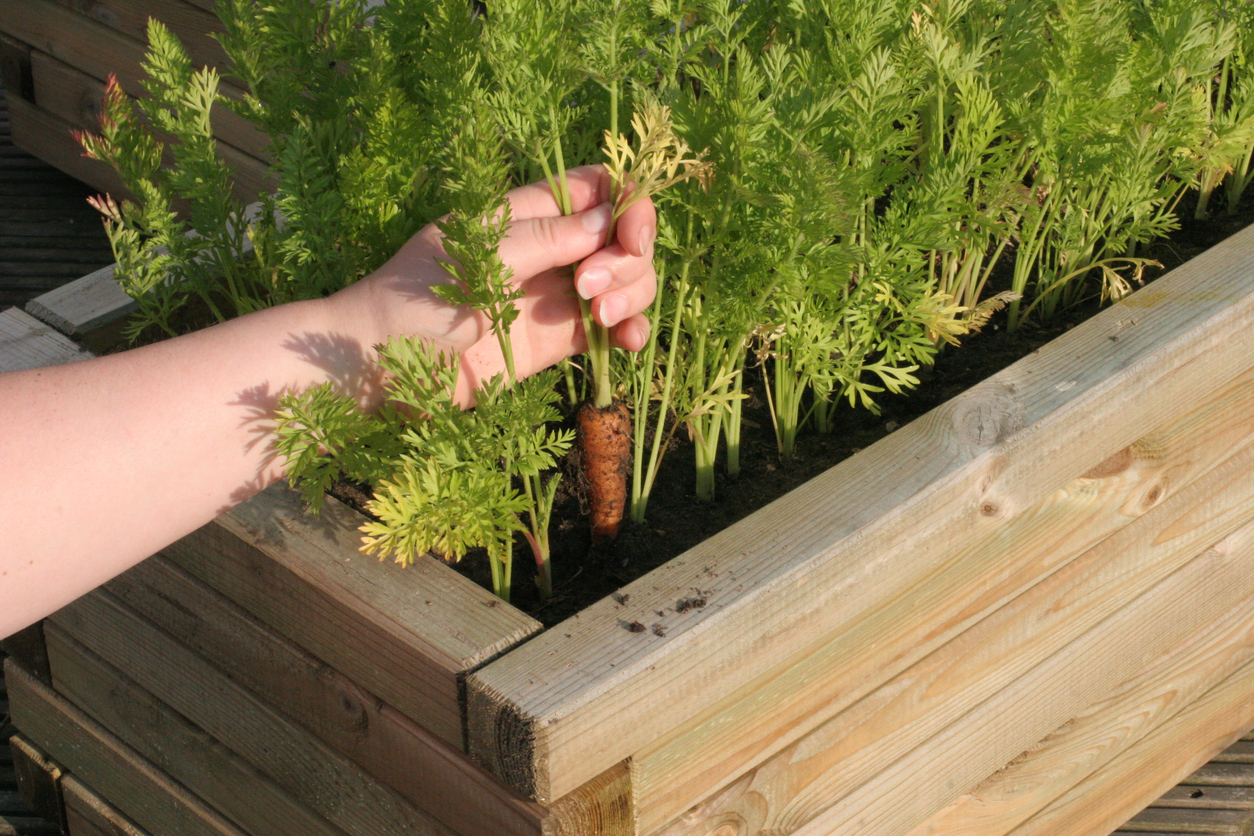
Since the end product is the main reason to grow this popular crop, it’s essential to know when to harvest carrots. Here’s the skinny on when and how to harvest carrots.
When is the best time to harvest carrots?
When you see the orange tops of carrots peeking above the soil and their foliage is fully developed, carrots are ready to harvest. Follow the seed packet directions for timing; generally, expect to wait 50 to 75 days. Pulling carrots too early will give you bland veggies; they need time to develop their sweetness.
Many gardeners start harvesting when carrots are finger-size (or about 1 to 1½ inches in diameter), but if you’re not ready to pick them, these root vegetables can stay underground for quite a while longer.
How do you harvest carrots?
Harvesting carrots can be a little tricky since you can’t see them until you start pulling them out. However, once sufficient time has elapsed, you can test one to see if it’s ready. If it is, harvest as many as you’re ready to use and leave the rest for later.
- Carefully loosen the soil around the carrot with a spade or trowel.
- Grab the base of the stem, gently twist, and pull.
- Remove the carrot tops (foliage) after harvest to prevent wilting.
How do you store carrots?
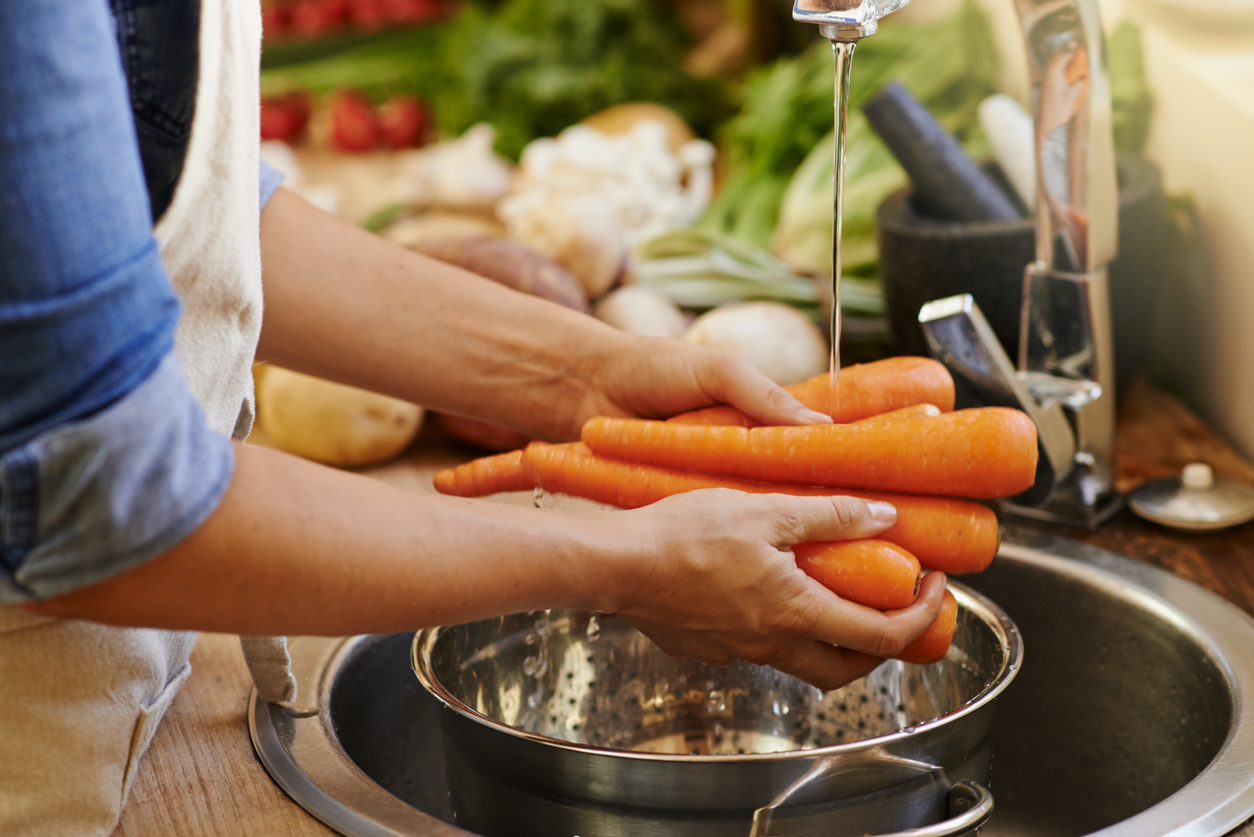
Cut the tops off before storing so the foliage doesn’t draw out the moisture from the roots. Submerge the unpeeled, unwashed carrots in water, or place them in a plastic bag for increased humidity, before placing them in the refrigerator to make them last up to 3 weeks. Carrots can also be frozen or canned, following food safety and preservation guidelines.
The best place to store carrots is in a sealed container in a root cellar, where they can last for up to 6 months. To prevent them from rotting, do not store carrots near bananas, apples, pears, or other fruits or vegetables that release ethylene gas.
Looking for more vegetable-growing tips? Check out our guides on growing onions, cucumbers, and potatoes.
